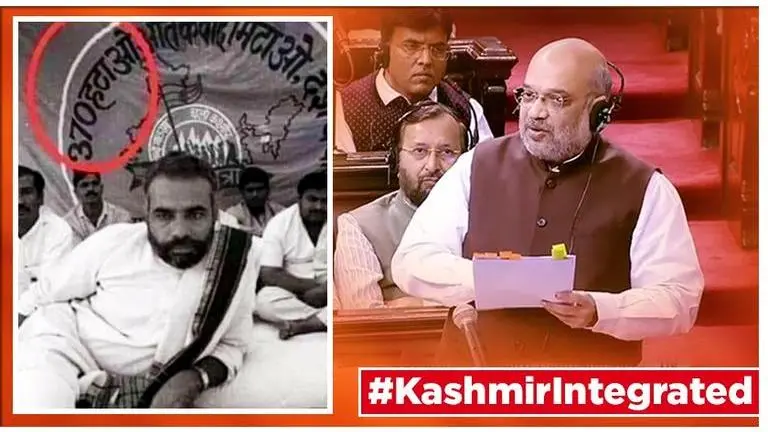Updated 5 August 2019 at 17:58 IST
With J&K's Article 370 to go, PM Modi's journey: From hoisting Tricolour at Srinagar's Lal Chowk 27 years ago, to integrating India
The Modi government is determined to solve the Kashmir problem and as it came to power for the second time with a greater majority, it had already said that Kashmir problem is its priority.
- India News
- 0 min read

In what is being dubbed as the most important decision by the Narendra Modi led Central government, Home Minister Amit Shah proposed a bill on revocation of Article 370 in the upper house of the Parliament. The Modi government is determined to solve the Kashmir problem and as it came to power for the second time with a greater majority, it had already said that Kashmir problem is its priority. By bringing a proposal to revoke the Article 370 and divide the state of Jammu and Kashmir into two parts, it has proved its commitment to solve the issue.
For some the development fulfilled years-long commitment of Prime Minister Modi - that he had hoisted national flag at Lal Chowk in Kashmir 27 years ago, pledging to make Kashmir an integral part is not known to many. This development marks the fulfillment of his commitment. In the early hours of the morning on January 26, 1992, the then leader of the BJP party Murli Manohar Joshi and few other party members, including Narendra Modi hoisted the Tricolour at Clock Tower which is present in the heart of Lal Chowk city. This hoisting of the flag was started as the ‘Ekta Yatra’ from Kanyakumari on December 11, 1991. It was then that Joshi introduced the convener of the Yatra who is now the Prime Minister of the country. PM Modi had then said that he will do everytging to integrate Kashmir in India.
Tweeting yet another picture of Prime Minister Modi in which he can be seen staging a protest to abbrogate Article 370, BJP general secretary Ram Madhav said that the promise has been fulfilled. It is an old picture and shows PM Modi sitting at a dharna site as the banner behind reads '370 Hatao' (remove 370).
Advertisement
What is Article 35 A?
Incorporated in the Constitution by a 1954 Presidential order, Article 35 A defines the permanent residents of the state of Jammu and Kashmir by giving special rights and privileges to the state subjects. It stems from Article 370 that gives autonomous right to Jammu and Kashmir.
The article is also referred to as Permanent Residents Law and bars woman belonging to the state from any property rights if she marries a person from outside the state. Even the children of such women do not get the right as they do not have any succession rights over the property.
Advertisement
What is Article 370?
It exempts Jammu and Kashmir from following the Indian Constitution except for Article 1 and itself. It also restricts Parliament's legislative powers in Jammu and Kashmir. It was passed in the Constituent Assembly on May 27, 1949 and is the first article of Part XXI of the Indian Constitution. The heading of this part is ‘Temporary, Transitional and Special Provisions’.
Published By : Digital Desk
Published On: 5 August 2019 at 16:55 IST
